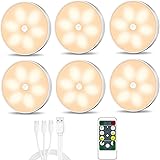The concept of home has undergone a remarkable transformation throughout history, evolving from simple shelters to complex living environments. In recent years, a significant shift has been observed with the advent of smart home technology, propelling our living spaces into a new era of connectivity and intelligence. The brief glimpse provided in the video above, showcasing new inventions and ideas for smart home living, offers a compelling peek into this exciting future.
It is becoming increasingly common for homes to be equipped with devices that communicate with each other, responding to commands and even anticipating needs. This interconnected ecosystem, often referred to as a smart home, promises not just convenience but also enhanced security, improved energy efficiency, and a more personalized living experience. The innovation in this sector is relentless, with smart appliances and gadgets being introduced at an astonishing pace, each designed to simplify daily routines and elevate the quality of life.
Embracing the Connected Life: What Defines a Modern Smart Home?
A modern smart home is not merely a collection of fancy gadgets; rather, it is understood as a seamlessly integrated system where various devices work in harmony. This orchestration is often managed through a central hub, a smartphone application, or even voice commands. The core principle revolves around automation and remote control, allowing homeowners to manage their environment from virtually anywhere. Imagine a scenario where the lights are dimmed as dusk approaches, or the thermostat adjusts itself based on the occupancy of a room – these are not futuristic fantasies but present-day realities being woven into the fabric of daily life.
The allure of these best appliances and gadgets for every home is often their ability to learn and adapt. Through artificial intelligence and machine learning, many smart devices can gather data on user preferences and environmental conditions, then optimize their operations accordingly. This level of responsiveness was once relegated to science fiction, but now, it is a cornerstone of smart home design, making living spaces more intuitive and less demanding.
Key Categories of Smart Home Gadgets and Their Impact
The landscape of smart home technology is vast, encompassing a multitude of devices that cater to every conceivable aspect of home management. These innovations are carefully designed to improve functionality and convenience.
Intelligent Lighting Solutions
One of the most accessible entry points into smart home automation is often lighting. Smart bulbs, switches, and fixtures can be controlled remotely, scheduled, or even activated by motion sensors. The benefit extends beyond simple on/off functionality; colors can be changed to match moods, and brightness levels can be adjusted to save energy. It is observed that lighting, when managed intelligently, can significantly reduce electricity consumption and contribute to a more comfortable ambiance.
Advanced Home Security Systems
Security is a paramount concern for many homeowners, and smart technology offers robust solutions. Smart doorbells with integrated cameras allow for visual verification of visitors, even when one is away from home. Door locks can be operated remotely, and advanced alarm systems are capable of distinguishing between a genuine threat and a pet, minimizing false alarms. Monitoring systems, which can include indoor and outdoor cameras with motion detection and night vision, are often managed through an app, providing peace of mind through constant vigilance.
Energy-Efficient Climate Control
Smart thermostats are considered highly impactful for managing energy usage. These devices learn heating and cooling preferences, adjust temperatures based on whether a home is occupied, and can even integrate with local weather forecasts. The potential for cost savings is substantial, as energy consumption can be optimized without sacrificing comfort. In essence, these systems ensure that energy is not wasted when it is not needed.
Convenient Kitchen and Cleaning Appliances
The kitchen, often regarded as the heart of the home, has seen an influx of smart appliances designed to streamline culinary tasks. Smart refrigerators can track inventory and suggest recipes, while ovens can be preheated remotely. Robotic vacuums and mops, capable of mapping a home’s layout and cleaning autonomously, are also increasingly popular, freeing up valuable time for other activities. The integration of these smart gadgets transforms chores into effortless operations.
Entertainment and Connectivity Hubs
Smart speakers have become central to many modern homes, serving as command centers for other devices, as well as providing entertainment through music streaming and information retrieval. Televisions, sound systems, and streaming devices are also increasingly being integrated into the smart home ecosystem, allowing for seamless control and personalized media experiences. It is often noted that these devices enhance the enjoyment of leisure time.
The Undeniable Benefits of Smart Living
The widespread adoption of smart home technology is driven by several compelling advantages that significantly enhance daily life. These benefits are often cited by users as primary motivators for investment.
- Unmatched Convenience: Tasks that once required manual intervention can now be automated or controlled with a simple voice command or tap on a screen. Lights, temperature, and even coffee makers can be managed from bed or miles away, creating an effortless living environment.
- Enhanced Security: A pervasive sense of safety is provided by smart locks, cameras, and alarm systems. These tools offer continuous monitoring and immediate alerts, allowing for quick responses to potential threats.
- Significant Energy Savings: Through intelligent management of lighting and climate control, smart homes can dramatically reduce energy consumption. This not only benefits the environment but also leads to noticeable reductions in utility bills. It is estimated that households adopting smart energy solutions can see savings that justify the initial investment over time.
- Increased Accessibility: For individuals with mobility challenges or disabilities, smart home technology can be a game-changer, enabling greater independence and control over their environment. Voice commands and remote access tools eliminate many physical barriers.
- Future-Proofing Your Home: As technology advances, a smart home infrastructure is inherently adaptable. New devices can often be integrated into existing systems, ensuring that a home remains modern and capable of supporting future innovations in smart appliances.
Navigating the Future: The Evolution of Smart Home Integration
The journey of smart home technology is far from over; in fact, it is widely believed that we are only at the cusp of its full potential. Future developments are expected to focus on even greater integration, predictive capabilities, and the seamless interaction between a home and its occupants. Imagine a home that not only responds to commands but anticipates needs, adjusting environments based on routines, health data, and even mood.
The integration of advanced AI and machine learning will lead to truly personalized experiences, where homes evolve with their inhabitants. Connectivity will extend beyond the home, linking to smart cities and broader IoT networks, creating a truly interconnected world. The innovations, such as those presented in the video showcasing new inventions and ideas for smart home living, underscore a future where our homes are not just structures, but intelligent partners in our daily lives.











